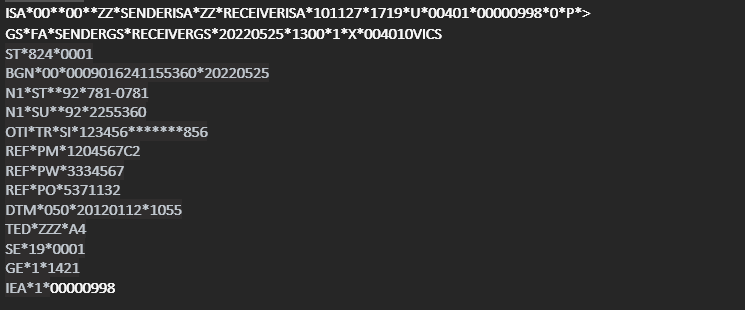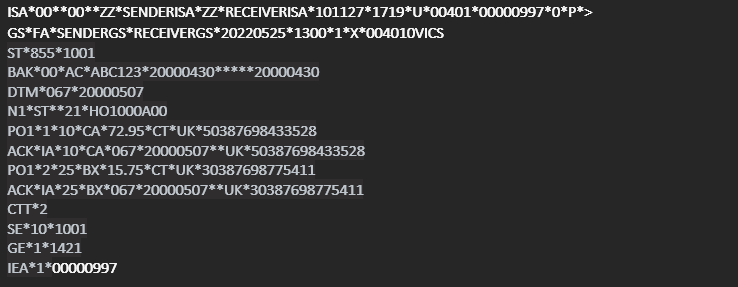In the world of EDI, there is a document for just about every type of transaction you could imagine. While these transactions aren’t specific to a particular industry/business, these are the three I most run across that cause the client the most confusion as to what they do and how they are most commonly used.
997
The 997, in its simplest form, is an acknowledgment that confirms that the original transaction sent (i.e. Purchase Order 850, Advanced Ship Notice 856, Invoice 810 etc) was received successfully.

There are more detailed 997s available that can communicate things like which transactions failed and sometimes they can even provide an error code. Depending on the industry you’re in, detailed 997s could be required.
824
The 824, Application Advice, is more commonly used to communicate errors in a batch of transactions sent. The 824 offers more granular information about the transmission received and any issues there reported. While it can communicate acceptance of your transaction, in most cases, it is used to communicate rejections and issues.

855
Lastly the 855, which is specific to orders (850) only. This transaction communicates, by Purchase Order line, which lines will be accepted, rejected or changed. It can also indicate any pricing issues.

While all of transaction types overlap on some of the information they provide, they can’t be used in place of each other…at least in most cases.
